Here Are Some Better Ideas For Quebec Street Than DPW’s Widening Plan
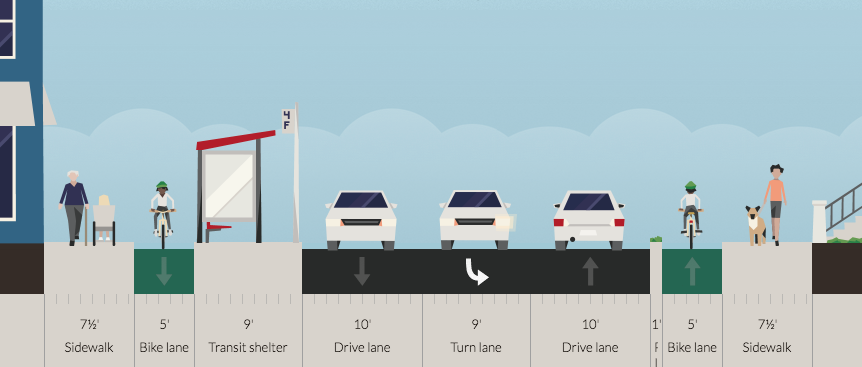
The Department of Public Works wants to widen several blocks of Quebec Street between 13th and 26th. DPW says adding more lanes is the answer because it will move more cars. But if we want to have safe streets for people to walk and bike, DPW’s four-lane design for Quebec is not the way to go.
According to DPW, the project’s purpose is “to increase north-south person trip capacity on Quebec… in a manner that enhances the overall transportation system’s ability to improve multi-modal access/safety, mobility, and connectivity.”
Well, how about the design above? It includes a protected bike lane for safe multi-modal access that expands “person-trip capacity” and a center turn pocket to smooth the flow of car traffic.
DPW’s conceptual plan looks nothing like that. Instead, here is the agency’s idea of “multi-modal access/safety”:
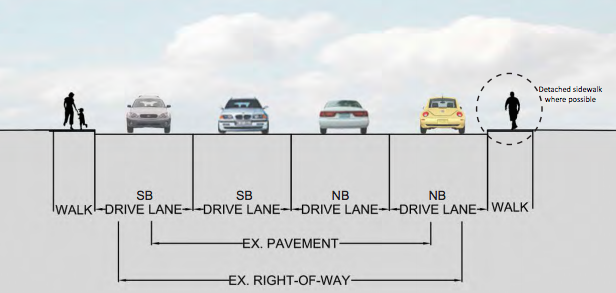
DPW plans to build sidewalks as part of the project, which currently are either woefully thin or nonexistent along the corridor. The plan is to make those walkways five feet wide, add a three foot buffer at sidewalk level, and… that’s it. That is the extent of the non-motorized access in DPW’s plan.
More can be done for all transportation modes. Check out the top image. Even with a center turn lane, there’s enough room for 7.5-foot sidewalks, bike lanes in each direction, and a bus shelter. A lot of that space comes from narrowing the car lanes to a much safer 10 feet, which should be the standard width on city streets. DPW’s plan includes 12-foot lanes — a width more suitable for freeways.
Since bus shelters only occupy space every few blocks, most of the street could have even wider sidewalks:
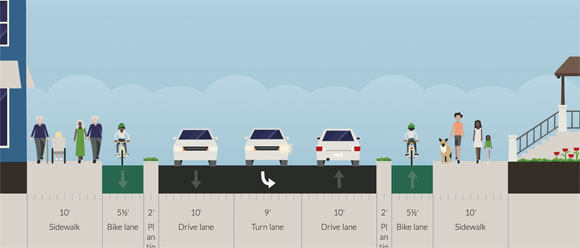
At some intersections, a turn lane isn’t necessary and there’s even more room to work with. Where Quebec crosses 13th and 14th, both one-way streets, a center left turn lane serves no purpose on one side of the intersection. At other crossings, turning traffic may be so insignificant that the turn lanes aren’t needed. Here’s a look at what you could do in that case:
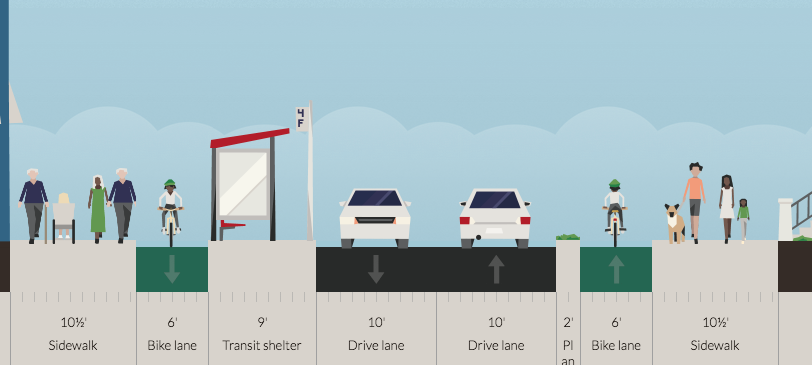
These are just ideas, not definitive answers. The point is, there’s more than one way to redesign a street. If DPW wants to increase “person trip capacity,” the options shouldn’t all revolve around cars, which are the least spatially efficient mode of transportation. Bikes have a much smaller footprint, and buses even smaller, if they are well-used. One simple way to make buses more appealing? Make streets where people feel safe and comfortable walking or biking to the bus stop.
DPW’s plan for Quebec simply doesn’t cut it. Other cities have caught on to the fact that to accommodate growth, they need to encourage more efficient forms of transportation than driving.
Here’s a look at a recent improvement in San Francisco, where Denver leaders happen to be right now, learning about urban streets:
Or, DPW could keep it local and just look to their design at 18th and Wazee:
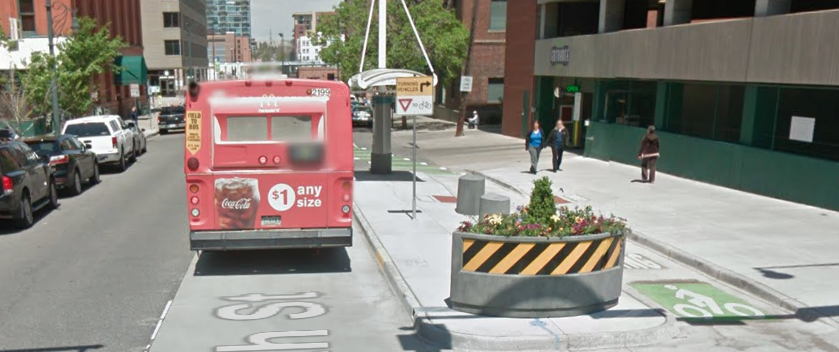
These ideas are not groundbreaking — they are, increasingly, the new normal. But there’s still a glaring void between what city leaders say they want to do, and how city policy plays out on Denver’s streets.
It’s still relatively early on in Quebec’s redesign, so go here to sign up for updates and affect the final outcome.
This story was changed to reflect the three feet buffers likely to be included in the final plan.


